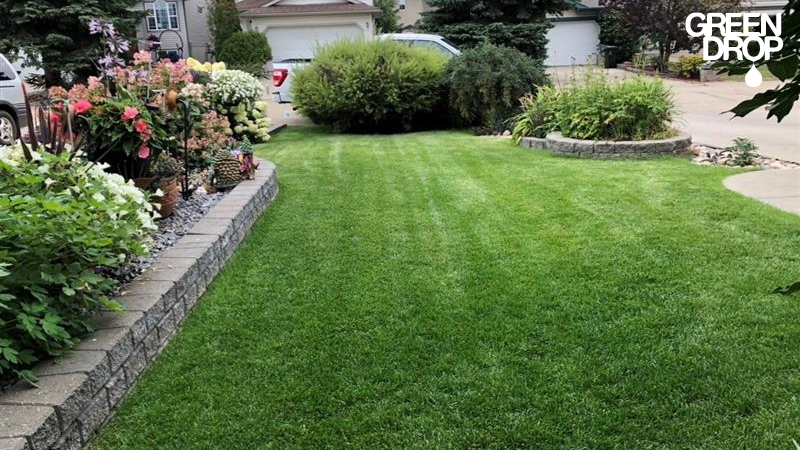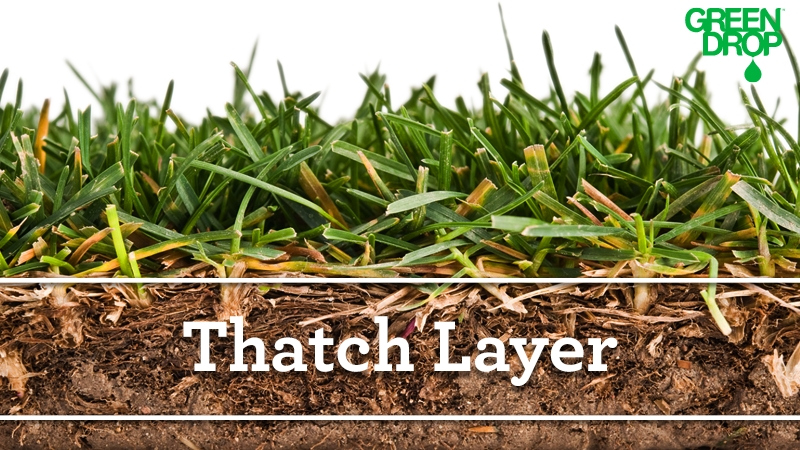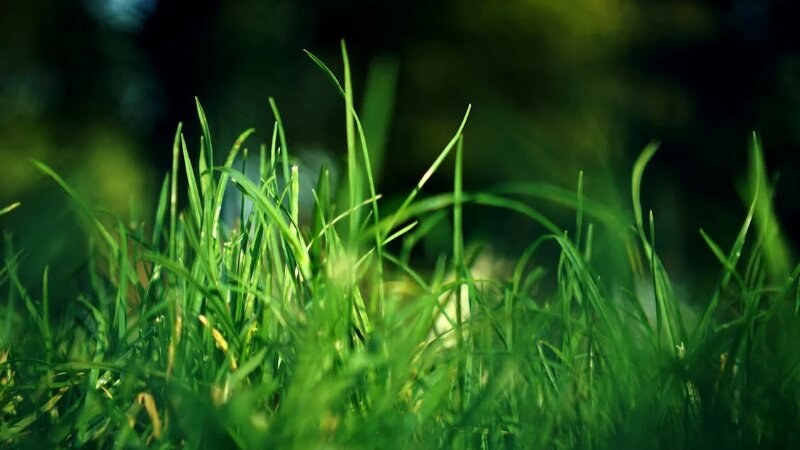Dethatching Your Lawn in Calgary: 10 Things to Know
Reading time: 5 minutesHave you just moved into a new home with a lawn that seems like it’s seen better days? Have you been super busy with life and haven’t had the chance to give your lawn some attention? (don’t worry, it happens to the best of us).
This is when many homeowners consider dethatching, aka power raking. But is it really the right choice for your lawn? Let’s find out as we answer the most pressing questions about dethatching.
Dethatching Your Lawn—Uncovering the Real Truth

1. What is Dethatching?
Dethatching, also known as power raking, is a lawn care process that removes the layer of accumulated organic material, known as thatch, from the surface of your soil. Thatch is made up of dead grass, roots, stems, and other debris that accumulate over time on the soil surface.
While a thin layer of thatch has its perks (it can help retain moisture and protect the soil), too much thatch can hinder water and nutrient penetration, leading to poor grass growth and other lawn problems.
Dethatching typically involves the use of specialized equipment that has a combination of either blades, tines, or brushes designed to penetrate the thatch layer and lift it from the soil surface. You can do this mechanically or manually using handheld dethatching rakes.
2. Understand What Causes Thatch
Knowing how thatch accumulates is the first step to being able to control it. Contrary to popular belief, thatch isn’t just the dead grass clippings from mowing. It’s more. It happens when grass grows at a faster rate than it decomposes. Multiple factors contribute to the buildup of thatch, including:
- Compacted soil
- Lawn neglect
- Cold temperatures
- Poor drainage
- Shallow watering
- Overwatering
3. Some Thatch Is Good
As mentioned earlier, a thin layer of thatch can be good for your lawn, especially in the summer when exposed roots need a little protection from the sun. It can also hold moisture, which helps keep your lawn hydrated and less prone to drought.
A bit of thatch can insulate your lawn from colder temperatures. That said, too much thatch is never a good thing. It can suffocate your grass and prevent light and water from reaching the root system. As a general rule, you don’t want your thatch layer to be any thicker than 1.5 centimetres.

4. Know the Difference Between Dethatching (Power Raking) & Aeration
Most of the time, when we notice thatch buildup on the lawn, more homeowners will consider either dethatching (power raking) or lawn aeration. Both of these will remove thatch on your lawn, but each of these processes will have very different results.
Aeration
Aeration involves using a core aerator, which pulls plugs of soil from the lawn and deposits them on the surface. This process breaks up thatch, improves soil drainage, and promotes healthier grass growth. By removing cores of soil, aeration helps eliminate soil compaction and encourages deeper root growth.
Dethatching
Dethatching, on the other hand, uses heavy tines and brushes to slice through the thatch layer on the lawn's surface. This method is more aggressive and removes thatch, but it can also damage healthy grass and disturb the topsoil if not done carefully.
To learn more about the two options, check out our blog: Aeration or Power Raking: Which Is the Better Choice?
5. Dethatching Only Works for Neglected Lawns
Dethatching is most beneficial for older lawns that have not received proper maintenance. Over time, these lawns accumulate a layer of dead grass, roots, and debris, which can hinder healthy grass growth. And even in these cases, a lot of the time, aeration may do the trick.

6. Expect Surface Disturbance
Dethatching involves aggressively raking or mechanically removing the thatch layer. While this effectively clears out the accumulated debris, it can also disrupt the topsoil and damage grassroots.
7. Limited Soil Benefits
Unlike aeration, which addresses soil compaction and promotes better root growth, dethatching primarily focuses on the surface of the lawn. It does not provide the same soil improvement benefits as aeration. In fact, dethatching does not help soil compaction at all. If that is ultimately your goal, aeration is a better option.
8. Temporary Solution
While dethatching can improve a lawn's appearance by removing excess thatch, it might be a temporary fix. Without addressing underlying soil compaction and health issues, the thatch layer can quickly accumulate again.
9. Weed Seed Disturbance
Dethatching can disturb dormant weed seeds present in the soil, leading to potential weed problems post-treatment. If you’re going with dethatching, make sure to follow up with proper weed control measures.
10. Timing Considerations
Timing is crucial when it comes to dethatching. It's typically recommended during periods of active grass growth to allow for quicker recovery. Performing dethatching at the wrong time can stress the lawn further.

Green Drop—Your Go-To Place for a Beautiful Lawn
In summary, while both power raking and aeration can help address thatch issues, they offer different approaches and outcomes. Aeration provides more comprehensive soil improvement benefits and promotes long-term lawn health, making it a preferred option for many homeowners. However, power raking may be suitable for addressing surface-level thatch problems in certain situations.
Not sure what’s right for you? Don’t worry, we’ve got your back…and your lawn.
Green Drop’s team of qualified turf experts offers comprehensive lawn care services throughout Calgary, AB, to make keeping your grass healthy easier than ever. Whether you need lawn aeration, overseeding, or weed control, we’ve got you covered.
We also offer tree and lawn care in Edmonton, Red Deer, Regina, Saskatoon, Winnipeg, and surrounding areas in Western Canada.

